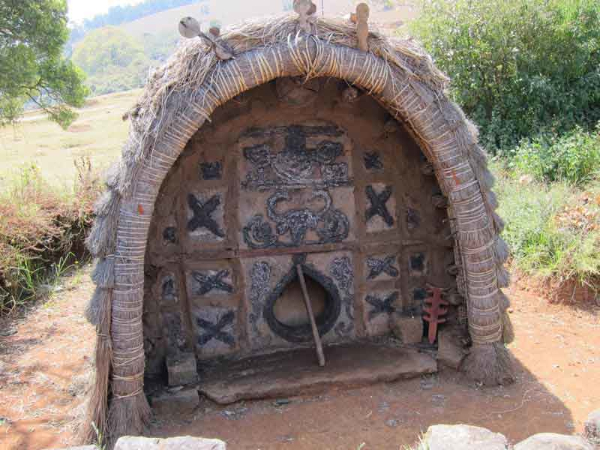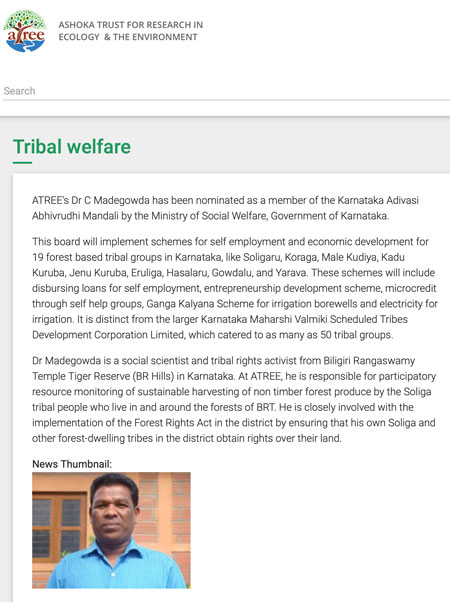
Photo © Ludwig Pesch
Learn more about the Toda community, their cultural traditions and the Nilgiri Biosphere >>
Anthropological Museum
Manav Bhawan, Bogadi
Mysore, Karnataka
Anthropological Survey of India
www.ansi.gov.in
The Anthropological Museum is a treasure trove of objects and weapons used by the South Indian communities, primarily the tribal communities, of India. Established in 1965 by the Anthropological Survey of India, the museum has over 1,000 exhibits collected from the tribal and ethnic groups of Karnataka (the Soliga, Jenu Kuruba, Malai Kudia and Panjari Yerava tribes), Andhra Pradesh (the Sugali, Bagatha, Kondakapu, Putiya Paiku, Koya, Lingadhari Koya, Yerukula, Valmiki and Lambadi tribes), Kerala (the Ulladan, Mala Arayan, Kadar, Paniyan, Adiyan and Kundu Vadiyan tribes), Tamil Nadu (the Toda, Kota and Mullu Kurumba tribes) and the Union Territories of Lakshadweep (the Minicoyan tribe). […]
The objects displayed here include an array of hunting, fishing and agricultural implements. We see bows, arrows, spears, knives, earthen utensils, mats, baskets, musical instruments and ornaments, which provide a glimpse of the lifestyles of these tribal communities. The museum has also given emphasis to recording the oral traditions of these groups, including their myths, legends, folk tales, folk songs, folk dances, folk music and folk arts by displaying the manuscripts, paintings, carvings, depictions, rock inscriptions and instruments of the tribes. The most unique collections are from Lakshadweep, which include some interesting fishing nets, bows and arrows and spears.
Source: Anthropological Museum for ‘live’ tribal heritage – Mysore – Bogadi – Metromela
Address : mysore.metromela.com
Date Visited: Thu Sep 01 2011 15:55:19 GMT+0200 (CEST)
Anthropology as is being practiced in the Anthropological Survey of India is unique with a truly holistic flavour. From very early on, it endeavored to bring in multi-disciplinary teams recruiting Anthropologists of both Cultural/Social and Biological varieties along with Linguists, Human Ecologists, Biochemists, Psychologists and Statisticians who collaborate with each other and with the National and State level institutions, while interacting with the renowned scholars of other countries to study man in all his entirety, not just for the sake of study but to create a humane concern for one another and to help tackle problems of contemporary relevance. Anthrological Survey of India swung in to an all round modernization drive by employing state-of-the art technologies and infrastructural development in a big way to go ahead with its mandate. […]
The Survey has so far produced 49 ethnographic films on the tribes and folk communities of India. Some of the documentation like the Onges of Little Andaman, the Jaungs of Orissa, the Todas of Nilgiri Hills, the Abors of NEFA, the Garos of Meghalaya, the Riangs of Tripura, the Asurs of Chotanagpur, Arts and Crafts of Manbhum have been acclaimed for detailed anthropological documentation. These are preserved as archival material for the use of researchers.
Source: Anthropological Survey of India
Address : http://www.ansi.gov.in/default.htm
Date Visited: Thu Sep 01 2011 16:04:48 GMT+0200 (CEST)
The Anthropological Survey of India (An.S.I.) is one of the premier research institutes established to carry out anthropological research as a sub-ordinate office under the Ministry of Culture. The genesis of An.S.I. is rooted in the Zoological and Anthropological section of the Indian Museum, which became the Zoological Survey of India in 1916. In 1945, Anthropology section of the Zoological Survey was carved out to establish the Anthropological Survey of India (An.S.I.) with Dr B.S. Guha as the founding Director. The head office was shifted from Benaras to Calcutta in 1948. […]
The Survey with its mandate of understanding the bio-cultural aspects of Indian populations would continue the studies of phylogeny, community genetics and disease genes through utilization of its DNA laboratories across the country.
The following ongoing projects on Bio-Medical anthropology were undertaken among the various populations of India. […]
The Survey has proposed to study the genomic variation of Indian tribes from different geographical niches with the following objectives:
- To understand the genomic variation of Indian population
- To reconstruct the evolutionary history of man in India, using molecular evidence.
- To create a database pertaining to the genomic diversity of various populations of India.
- To trace the migration history of Indian population through mtDNA and Y- chromosome studies.
Source: Anthropological Survey of India – Results Framework Document
Address : http://www.ansi.gov.in/Results_Framework_Document.html
Date Visited: Thu Sep 01 2011 16:12:24 GMT+0200 (CEST)
[Bold typeface added above for emphasis]

Learn more about Adivasi rights in Karnataka: Participatory resource monitoring, implementation of the Forest Rights Act and welfare schemes | Research on related issues undertaken by Azim Premji University (Bengaluru) >>
Learn more
Crafts and visual arts | Fashion and design | Masks
eBooks, eJournals & reports | eLearning
eBook | Background guide for education
Forest dwellers in early India – myths and ecology in historical perspective
Himalayan region: Biodiversity & Water
History | Hunter-gatherers | Indus Valley | Megalithic culture | Rock art
Languages and linguistic heritage
Modernity | Revival of traditions
Tribal Research and Training Institutes with Ethnographic museums
Tips for using interactive maps
Toggle to normal view (from reader view) should the interactive map not be displayed by your tablet, smartphone or pc browser
For details and hyperlinks click on the rectangular button (left on the map’s header)
Scroll and click on one of the markers for information of special interest
Explore India’s tribal cultural heritage with the help of another interactive map >>